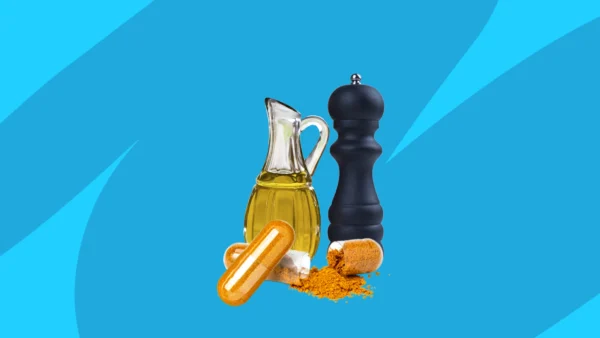Hemochromatosis, aka iron overload, is a serious condition that affects more than one million people in the United States. The good news? Regular visits with your doctor, treatments like chelation agents and phlebotomy, and following a hemochromatosis diet can help keep iron levels in check.
What is hemochromatosis?
There are two types of hemochromatosis: primary and secondary. Primary hemochromatosis is an inherited condition that causes the body to absorb too much iron. Most people absorb about 1 milligram of iron per day, which gives the body what it needs. However, people with hemochromatosis absorb about four times that amount.
Secondary hemochromatosis can be caused by a number of different mechanisms. Examples include consumption of too much iron from food or supplements, medical conditions such as liver diseases, or treatments like multiple blood transfusions.
When iron levels get too high, the excess iron can find its way into vital organs like the pancreas, liver, and heart, explains Marvin Singh, MD, a triple-board certified gastroenterologist and founder of Precisione Clinic. This can cause long-term damage and lead to life-threatening conditions.
Dr. Singh says treatment for hemochromatosis usually involves phlebotomy, which helps keep the iron levels lower in your bloodstream, but dietary modifications may also help manage iron levels. However, he does point out that dietary therapy or restrictions are not a replacement for standard therapies in this condition.
How a hemochromatosis diet works
A hemochromatosis diet will include foods to eat and ones to limit. This type of eating plan can be followed long-term under the guidance of a medical professional. Following the principles of a diet for hemochromatosis will help you lower your intake of heme iron (found in animal sources) as well as understanding which other foods affect the absorption of iron. You may also try to lower iron levels through medication, supplements, and other lifestyle modifications. When following a hemochromatosis diet you will:
- Decrease your consumption of red meat, which is high in heme iron
- Feel free to drink tannin-containing coffee and tea with meals to decrease the absorption of iron
- Consider eating eggs, fiber, and supplemental calcium to inhibit the absorption of iron
- Limit your consumption of sugary foods and drinks which enhance the absorption of iron
- Avoid taking any dietary supplements with iron or vitamin C, which increases iron absorption
- Avoid raw and undercooked shellfish which can contain a bacteria, vibrio vulnificus, that is more virulent in a high iron environment and can be fatal
- Feel free to eat fruits, vegetables, nuts, grains, rice, and beans, because even though they contain non-heme iron (found only in plant sources), non-heme iron is more difficult to absorb than heme iron
- Don’t drink alcohol, as it can heighten the risk of liver damage with hemochromatosis
- Avoid using iron cookware based on the transfer of iron to food cooked within it
6 foods to eat when following a hemochromatosis diet
To help reduce the occurrence of iron overload/hemochromatosis and prevent long-term organ damage, Trista Best, RD, says it’s best to eat foods relatively low in iron.
The good news is following a hemochromatosis diet does not mean eliminating all sources of iron. “Plant food sources that contain iron have a form of iron called non-heme iron, while animal sources of iron are known as heme iron,” says Best. Non-heme iron is not as easily absorbed as heme iron. So, it’s not always necessary to avoid vegetables that are high in iron. “Eggs, grain, and legumes contain non-heme iron as well and can allow the individual to consume iron with less risk of hemochromatosis,” says Best.
With that in mind, here are some foods to include in a hemochromatosis diet:
1. Fruits and vegetables
Green leafy vegetables and brightly colored fruits are packed full of antioxidants, which inhibit free radical production. Although spinach is known for its iron content, it contains oxalates, which impairs non-heme iron absorption. Other sources of oxalates include kale, rhubarb, and strawberries.
Berries, plums, sweet cherries, apples, artichokes, chicory, and red onions contain polyphenols, which have been shown to inhibit heme iron absorption. Plus, fruit and vegetables contain non-heme iron, which is not absorbed well.
2. Lean protein
Lean protein like chicken, white-meat turkey, cod, mackerel, and salmon are lower in iron than red meat and should be the focus when including heme protein sources in the diet.
3. Legumes, grains, nuts, seeds, and beans
Whole grains, legumes, seeds, beans, and some nuts contain phytates or phytic acid, which can decrease the absorption of iron. They’re also high in fiber, which impairs the absorption of non-heme iron.
4. Eggs
Phosvitin, a phosphoprotein in egg yolks, binds to iron and helps limit the amount of iron the body absorbs.
5. Coffee and tea
Tea drinkers consume an organic compound called tannins, which are commonly found in coffee and tea. According to a 2017 study review published in Current Developments in Nutrition, tannin consumption may impair iron bioavailability.
RELATED: Health benefits of coffee
6. Dairy foods
Dairy foods like milk, cheese, and yogurt are low iron foods. Plus, they can decrease the iron absorption in pills and foods taken at the same time.
7 foods to limit in a hemochromatosis diet
A low-iron diet for hemochromatosis requires avoiding foods that are rich sources of heme iron, which is more easily absorbed by the body. One way to avoid foods that can make hemochromatosis worse is to eliminate or reduce food and drinks high in iron.
Here are some food and beverages to avoid or reduce in a low-iron diet for hemochromatosis:
1. Vitamin C-rich foods
Dr. Singh says to avoid food and drinks with high amounts of vitamin C because vitamin C can increase iron absorption, which can worsen the iron burden and hemochromatosis status.
2. Red meat in excess
Nutritionist Best says animal sources of protein, like beef, contain heme iron, which is more easily absorbed by the body. Including small amounts of red meat as part of a hemochromatosis diet may be acceptable, but should be discussed with a healthcare provider or registered dietitian.
3. Raw fish and shellfish
Raw fish and shellfish—especially oysters—may contain vibrio vulnificus, a bacterium found in warm saltwater. This bacteria can cause the illness vibriosis. While anyone can get sick from vibriosis, the Centers for Disease Control and Prevention (CDC) says people with iron overload disease, and especially those with liver involvement, are more likely to get an infection or have complications. Symptoms to be aware of include fever, chills, diarrhea, nausea, vomiting, or a skin infection that appears red and warm.
4. Alcoholic beverages
Dr. Singh says alcohol could potentially cause injury to the liver in those people with hemochromatosis, so avoiding or limiting it is best. That said, anyone with cirrhosis from hemochromatosis should stop drinking alcohol completely.
5. Sugar
Food and beverages high in certain sugars can increase absorption of non-heme iron by approximately 300%, according to a 2013 study published in PLOS ONE. More specifically, the study found that high fructose corn syrup, which is the major source of fructose in a Western diet, was the main culprit. Sucrose and glucose did not appear to increase the absorption of dietary iron.
6. Iron-fortified foods
Many foods like breakfast cereal are fortified with iron. Eating iron-rich fortified foods can contribute to the effects caused by too much iron in the body.
7. Beta-carotene
Present in foods like beets, apricots, carrots and sweet potatoes, beta-carotene increases the absorption of iron, and can even diminish the iron inhibiting effects of tannins when taken at the same time. That’s why it’s best not to supplement with the carotenoid.
Is fasting good for hemochromatosis?
Intermittent fasting is a popular method of eating that restricts food and drink to certain times of the day or days of the week. More specifically, it requires alternating between periods of eating and periods of fasting.
There are various intermittent fasting methods, with each style boasting benefits related to certain health conditions. When it comes to fasting and hemochromatosis, the research on benefits and risks is limited.
Dr. Singh is not aware of any recent study on the role of intermittent fasting and hereditary hemochromatosis. Still, he does point out that if by fasting you end up eating less iron-rich foods, it could be a potential adjunctive measure to management. However, he would not rely on it as a primary means of therapy.
One 2014 study published in Eating and Weight Disorders looked at the impact short-term fasting had on iron metabolism in relation to well-being and depression symptoms in 46 healthy women.
While not a study designed to test iron levels and metabolism in people with hemochromatosis, results showed that restricting food for a one to two-day timeframe every eight days for a period of 48 days significantly decreased iron concentrations in hair and serum. It also found a decrease in ferritin levels, hemoglobin, hematocrit, red blood cells, and total iron-binding capacity.
How to lower iron levels in other ways
A low-iron diet for hemochromatosis may be recommended by your healthcare provider. However, dietary changes are often not enough to bring iron levels down to the normal range in patients with hemochromatosis. According to the American College of Gastroenterology, other non-dietary treatments for hemochromatosis include:
- Therapeutic phlebotomy
- Iron chelation
- Supplements
Therapeutic phlebotomy
Therapeutic phlebotomy—a procedure that removes blood and iron from your body—is the most common treatment for hemochromatosis. During this procedure, a doctor or practitioner inserts a needle into a vein and drains a small amount of blood. This blood flows through an airtight tube into a sterile bag.
The goal of therapeutic phlebotomy is to reduce the ferritin (a protein that stores iron in your body) levels in your blood to 50 mcg/L or less. This will secondarily decrease tissue iron stores to normal levels and hence decrease the effects of iron overload in the body (improve fatigue and skin bronzing complications, reduce abdominal pain, and improve cardiac functioning and diabetes control).
Iron chelation
Medications like chelating agents are commonly prescribed to help lower iron levels in people with secondary hemochromatosis. Chelating agents bind to iron in your body, thus allowing it to pass from the body into the stool or urine, before it can be deposited in our vital organs. This is used for people who can’t have therapeutic phlebotomy. Common chelating agents for hemochromatosis include Desferal (deferoxamine), Jadenu (deferasirox), and Ferriprox (deferiprone). These medications may be given orally in pill or liquid form, or through an intravenous (IV) infusion.
Supplements
Research on the beneficial role dietary supplements play in managing hemochromatosis is lacking. However, avoiding supplements containing iron or vitamin C is recommended since they can increase the amount of iron the body absorbs.
In addition, there are some studies that show both calcium and zinc supplementation may decrease iron absorption; however, the results on body iron levels seem to be minor.
When to see your doctor
Symptoms that may require a doctor’s visit include:
- Fatigue
- Weakness
- Abdominal pain
- Joint pain, especially knees and hands
- Decrease in sex drive
- Gray, metallic, or bronze skin coloring
Dr. Singh says anyone with hereditary hemochromatosis should be under the care of a physician, even if treatment is not necessary at the moment, if for no other reason than periodic observation.
“Early diagnosis and management can help prevent excessive iron deposition in various organs and can reduce the risk of things like liver cirrhosis, joint issues, heart failure, diabetes, and impotence, among others,” he says. Once these problems arise, Dr. Singh says reversing them might be more challenging.











